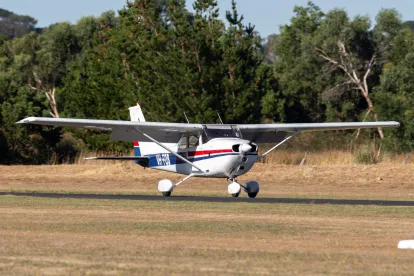On December 19, 2022, the Treasury Department and the IRS released Notice 2023-6 (the Notice), which provides guidance with respect to the credit for sustainable aviation fuel (SAF). The Inflation Reduction Act of 2022 (the IRA) enacted Section 40B of the Internal Revenue Code of 1986, as amended (the Code), which allows a credit with respect to the sale or use of a qualified mixture prior to 2025 equal to the product of the number of gallons of SAF in the qualified mixture and an applicable credit rate (the SAF Credit).
The SAF Credit under the IRA
The SAF Credit is a blenders’ credit. Under the IRA, the SAF Credit generally equals the product of (1) the number of gallons of SAF that a taxpayer adds to a kerosene-based mixture (a Qualified Mixture) that is sold or used in 2023 or 2024 and (2) a per-gallon credit rate (the Credit Multiplier).1 For purposes of determining a taxpayer’s SAF Credit for a taxable year:
-
SAF is defined as the portion of a liquid fuel that is not kerosene and meets the requirements of one of two American Society for Testing and Materials (ASTM) qualifications: (a) ASTM D7566, which is the standard specification for aviation turbine fuel that consists of conventional and synthetic blending components or (b) the Fischer Tropsch provisions of ASTM D1655 Annex A1.2 ASTM D1655 is the standard specification for aviation turbine fuel, and Annex A1 provides specifications for co-processing petroleum and certain non-conventional feedstocks. In addition, SAF cannot be derived from palm fatty acid distillates or petroleum, or from co-processing certain fatty acid compounds with non-biomass feedstocks.
-
The relevant SAF must be certified as having a lifecycle greenhouse gas emissions reduction percentage (the GHG Reduction Percentage) of at least 50 percent. The GHG Reduction Percentage means the percentage reduction in lifecycle greenhouse gas emissions achieved by the relevant SAF as compared with petroleum-based jet fuel, as defined in accordance with (a) the most recent Carbon Offsetting and Reduction Scheme for International Aviation (CORSIA) adopted by the International Civil Aviation Organization (ICAO) with the agreement of the United States or (b) any similar methodology which satisfies certain criteria under the Clean Air Act, as in effect on the date of enactment of the IRA (a Similar Methodology).
-
A Qualified Mixture is a mixture of the relevant SAF and kerosene that is (a) used by the taxpayer (or sold by the taxpayer for use) in an aircraft in the ordinary course of the taxpayer’s trade or business and (b) produced in the United States and transferred to the fuel tank of the relevant aircraft in the United States.
-
The Credit Multiplier equals the sum of $1.25 and an additional amount based on the GHG Reduction Percentage with respect to the relevant SAF (the Supplementary Amount). The Supplementary Amount is an amount, not to exceed 50 cents, equal to one cent for each percentage point by which the GHG Reduction Percentage with respect to the relevant SAF exceeds 50 percent.
As an alternative to claiming the SAF Credit with respect to eligible SAF, a taxpayer may claim a credit under Section 6426(k) of the Code against the excise tax applicable to aviation fuel. If the excise tax credit is chosen, the taxpayer must claim the credit against its excise tax liability and, thereafter, may claim either a cash payment or a refundable income tax credit.
In order for a taxpayer to qualify for the SAF Credit or the excise tax credit under Section 6426(k) of the Code, the producer or importer of the SAF must be registered with the IRS under Section 4101 of the Code.
Definitional Guidance under the Notice
The Notice provides guidance with respect to various definitional aspects of Section 40B of the Code, including the following:
-
Categories of Qualified Mixtures. The Notice confirms that a Qualified Mixture can be (a) a blend of ASTM-compliant kerosene and synthetic blending component that meets the specifications of ASTM D7566 or (b) a liquid fuel that is produced by co-processing petroleum with synthesized hydrocarbons via the Fischer Tropsch process and meets the specifications of ASTM D1655 Annex A1.
-
Insight Regarding the ASTM Specifications. The Notice observes that, currently, there is no U.S.-produced aviation fuel that meets the specifications of ASTM D1655 Annex A1. Accordingly, the Notice primarily addresses the requirements applicable to a Qualified Mixture produced under ASTM D7566.
-
Calculation of GHG Reduction Percentage. The Notice provides that the GHG Reduction Percentage equals a fraction, expressed as a percentage, the numerator of which equals the lifecycle greenhouse gas emissions of petroleum-based aviation fuel (the Aviation Fuel Baseline) minus the lifecycle emissions value of the relevant SAF and the denominator of which equals the Aviation Fuel Baseline. The Notice also provides that, until further notice, the Aviation Fuel Baseline will be 89 grams of carbon dioxide equivalent per megajoule of energy, which is the standard used by the ICAO.
-
Calculation of the Supplementary Amount. The Notice provides that the Supplementary Amount equals the product of (a) the applicable rate (currently one cent) and (b) the GHG Reduction Percentage minus 50 percentage points.
-
GHG Reduction Percentage Safe Harbor. The Notice provides that the IRS will accept, as a safe harbor, a GHG Reduction Percentage calculated from the ICAO’s most recent publication of (a) the CORSIA Default Life Cycle Emissions Values for CORSIA Eligible Fuels or (b) the CORSIA Methodology for Calculating Actual Life Cycle Emissions Values.
Compliance Guidance
Section 40B of the Code provides that the SAF Credit is not available unless the producer or importer of the relevant SAF is registered with the Secretary of the Treasury under Section 4101 of the Code. The Notice provides detailed guidance with respect to the procedure for registration, the certification process for demonstrating compliance with certain sustainability requirements under CORSIA, and the procedure for claiming the SAF Credit on IRS Form 8864 (Biodiesel and Renewable Diesel Fuels Credit).
The Notice also provides guidance for taxpayers that are eligible for the SAF Credit but have not completed the registration requirements in time to claim the credit in the ordinary course. These taxpayers may claim the SAF Credit by filing IRS Form 8864 (Biodiesel and Renewable Diesel Fuels Credit) with an amended income tax return once the appropriate persons are duly registered.
Looking Ahead
The expiration of the SAF Credit is intended to coincide with the effectiveness of the clean fuels production credit (the CFPC) under Section 45Z of the Code, which will be available for SAF produced by a taxpayer and sold to a third party during 2025, 2026, or 2027. The CFPC is a producers’ credit rather than a blenders’ credit. The CFPC generally will be available for transportation fuels, including SAF, produced at a U.S. facility for which neither the hydrogen production tax credit, the hydrogen investment tax credit, nor the tax credit for carbon capture and sequestration under Section 45Q of the Code is allowed. The CFPC will equal the product of a base credit amount per gallon of transportation fuel and an emissions factor, which is expected to be calculated in a manner similar to the GHG Percentage Reduction. The Treasury Department and the IRS have not yet issued guidance in connection with the CFPC, although commentators and practitioners expect that the eventual guidance will be consistent with the guidance provided under the SAF Credit.
Request for Comments
The Notice provides that the IRS anticipates issuing additional guidance on the SAF Credit, and the Treasury Department and the IRS are seeking comments on various topics related to the SAF Credit through February 17, 2023. For example, the Notice requests comments regarding which methods should be deemed to qualify as Similar Methodologies for purposes of the GHG Reduction Percentage, which is a question that was not addressed by the Notice. Commentators and practitioners are particularly focused on this question given that the CFPC, like the SAF Credit, permits calculation of the relevant emissions factor using a “Similar Methodology.”
FOOTNOTES
1. The taxpayer must include the amount to the SAF Credit in gross income under Section 87 of the Code.
2. Fischer Tropsch is a gas-to-liquid polymerization process used to convert carbon monoxide and hydrogen into liquid hydrocarbon fuels for petroleum product substitution.





 />i
/>i
